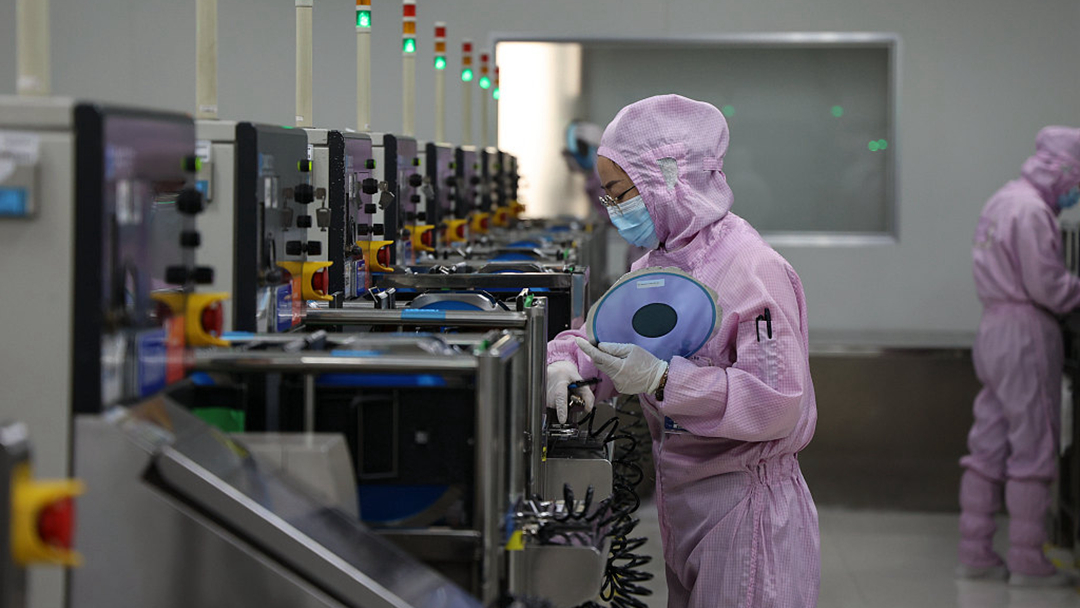
Microsoft office in New York, the U.S. /CFP
Microsoft office in New York, the U.S. /CFP
Editor's note: Hayat Bangash is a freelance columnist on international affairs with degrees in business administration and war studies. The article reflects the author's opinions, and not necessarily the views of CGTN.
Big Tech, America's five large tech companies, is facing the proverbial bloodbath. Tens of thousands of workers have been axed from their jobs, with expectations of further downsizing in the coming months ahead. Brash capitalism is fading away as many workers at American tech companies are finding out via emails that they were laid off.
For American tech companies, these layoffs are monumental. Never since the dot-com crash of the year 2000 have employees been laid off in such high numbers. As companies are downsizing, the domino effect of downstream layoffs, for example in advertising agencies, is causing more people to walk the unemployment lines.
The problem started during the COVID-19 pandemic when the American tech sector was enjoying its heyday. Online consumption was booming alongside home-based work and leisure trends. Enterprises expanded too aggressively and that led them into over-ambitious hiring sprees. Now with online consumption dropping, the new reality is finally dawning upon Big Tech.
Nearly 9 million people in the U.S. are working for the tech industry, adding $1.8 trillion to their economy. When a sector with this volume of capital and human resource is affected, the American economy, investments, and retirement plans would take a beating. Meanwhile, Raymond Hill, a senior lecturer of finance at Emory University in Atlanta, is quoted by a Chinese media outlet as saying that the U.S. economy is already slowing down.
While it remains to be seen if the U.S. economy, highly dependent on the tech sector, can navigate this situation, China is showing a different picture.

Employees work in the clean rooms of a semiconductor factory in east China's Shandong Province, January 9, 2022. /CFP
Employees work in the clean rooms of a semiconductor factory in east China's Shandong Province, January 9, 2022. /CFP
The Chinese economy has a unique ability to withstand downturns happening elsewhere in the world. During the global financial crisis of 2008-2009, China's GDP was 8 percent of the global total but it contributed to 50 percent of global economic growth. It was China that pulled the U.S. out of the crisis.
Later during the COVID-19 outbreak, Chinese factories remained largely opened. After a momentary dip, the Chinese economy is slated to resume its pre-pandemic growth levels, as forecasted in recent reports of global financial institutions. Now with post-pandemic policy adjustments, China's manufacturing sector will expand this year, creating more opportunities for top tech talent, according to Hays, a global professional recruiting group.
The Central Economic Work Conference last December said the application of frontier technologies such as artificial intelligence and quantum computing would boost cyberspace and digital development. Accordingly, there will be a significant rise in demand for tech talent. There's analysis by the Chinese Academy of Personnel Science that the digital ecosystem of just one Chinese tech company, Tencent, is expected to create 31.8 million new jobs in the coming five years.
Moreover, China continues to be the largest consumption market of semiconductors. The U.S. is attempting to inhibit China's growth by limiting the export of chip-manufacturing equipment but this is creating a gap that is being filled by China's domestic manufacturers. As these manufacturers expand their production base, the need for qualified workers will rise. Local companies are vying to make breakthroughs in core technologies. This endeavor is the driving force behind hiring tech talent both for chip manufacturing and the assembly lines of electronic devices and equipment.
The mass layoffs at American tech companies point to another phenomenon. The pressure from the U.S. on its allies over chip export controls to China shows desperation on the part of the American government while seeing the extraordinary progress of China's tech industry. As China leads the development and deployment of high-speed 5G communication networks, American restrictions would prove counterproductive.
The way forward for the U.S. is to walk back its attempts of limiting chip exports to China, adhere to healthy competition practices under the World Trade Organization, and strive for a win-win outcome in developing a shared digital future for humanity. A narrow-minded approach will only result in financial and professional difficulties for the American tech talent in specific and the American public in general.
(If you want to contribute and have specific expertise, please contact us at opinions@cgtn.com. Follow @thouse_opinions on Twitter to discover the latest commentaries on CGTN Opinion Section.)